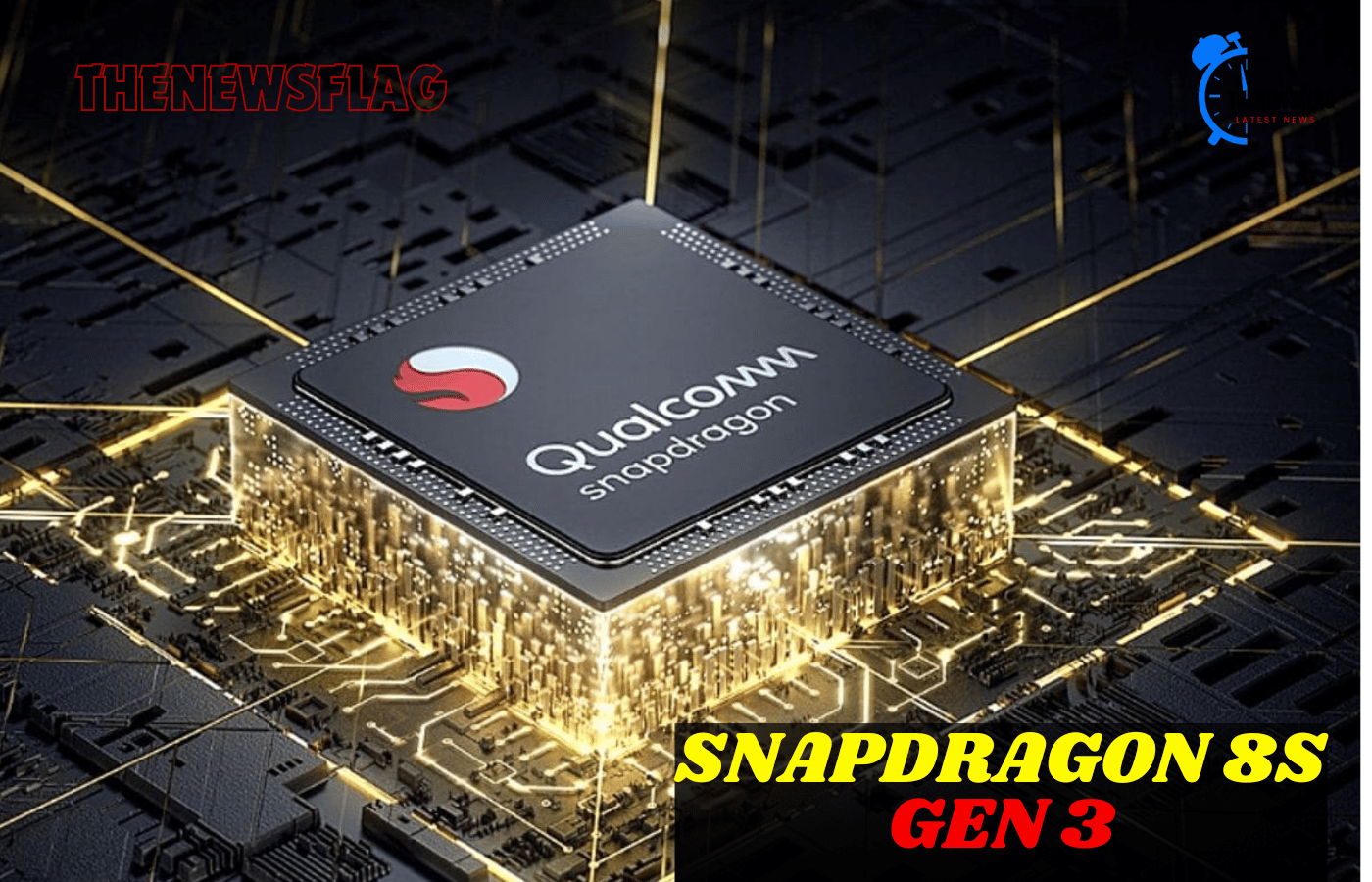With a Cortex-X4 core, the Snapdragon 8S Gen 3 is here to power 2024’s flagship killers. Qualcomm chipsets are stratified by number, but there are further subdivisions with “+” and more recently “s” models. Today the company unveils the Snapdragon 8s Gen 3, a chipset that offers a selection of the premium Snapdragon features without costing as much as the premier 8 Gen 2 and 8 Gen 3 chips.
The 8s Gen 3 is a 4nm chip with a Cortex-X4 prime core at 3.0GHz, four performance cores at 2.8GHz and three efficiency cores at 2.0GHz. It supports up to 24GB of LPDDR5x RAM (up to 4,200MHz) and UFS 4.0 storage. For connectivity, it does USB 3.1 Gen 2 over USB-C.
Here is how that compares to the Snapdragon 8 Gen 3 and the older Snapdragon 8 Gen 2:
| Snapdragon 8 Gen 2 | Snapdragon 8s Gen 3 | Snapdragon 8 Gen 3 | |
|---|---|---|---|
| Node | TSMC 4nm | TSMC 4nm | TSMC 4nm |
| CPU (Prime) | 1x Cortex-X3 @ 3.2/3.36GHz | 1x Cortex-X4 @ 3.0GHz | 1x Cortex-X4 @ 3.3/3.4GHz |
| CPU (Big) | 2x Cortex-A715 @ 2.8GHz 2x Cortex-A710 @ 2.8GHz |
4x Cortex-A720 @ 2.8GHz | 3x Cortex-720 @ 3.15GHz 2x Cortex-720 @ 2.96GHz |
| CPU (Small) | 3x Cortex-A510 @ 2.0GHz | 3x Cortex-A520 @ 2.0GHz | 2x Cortex-A520 @ 2.3GHz |
| RAM | up to 24GB LPDDR5x 4,200MHz | up to 24GB LPDDR5x 4,200MHz | up to 24GB LPDDR5x 4,800MHz |
| Storage | UFS 4.0 | UFS 4.0 | UFS 4.0 |
| USB | USB 3.1 | USB 3.1 Gen 2 | USB 3.1 Gen 2 |
| GPU | Adreno 740 | Adreno 735 | Adreno 750 |
| 5G modem | X70 | X70 | X75 |
| ISP | triple 18-bit | triple 18-bit | triple 18-bit |
| Video | 8K HDR @ 30fps 4K @ 120fps |
4K HDR @ 60fps 1080p @ 240fps |
8K HDR @ 30fps 4K @ 120fps |
As you can see, this isn’t just a binned version of the 8 Gen 3. It has the Cortex-X4 core at a lower clock speed, but also 4 big cores and 3 small ones for an 1+4+3 configuration. The original 8 Gen 3 chip is in a 1+5+2 configuration.
RAM support is closer to the 8 Gen 2 and we see the older Snapdragon X70 5G modem rather than the X75. However, Qualcomm says that the 8s Gen 3 implements 3GPP Release 17 and 5G power savings that the 8 Gen 2 doesn’t. Either way, the chip is ready for the new Wi-Fi 7 standard, so phones will be able to enjoy more bandwidth and lower latency. For audio, 15-bit 44.1kHz lossless wireless streaming is supported as is Auracast.

Let’s have a closer look at what premium features Qualcomm chose for the Snapdragon 8s Gen 3.Snapdragon 8s Gen 3 highlights
Generative AI is at the forefront as new applications have gained a lot of popularity but also revealed new issues. The 8s chip can run the most popular models like Llama 2, Baichuan-7B and Gemini Nano (Pixel 8 owners recently found out their phones can’t run Gemini Nano – that is one of the new issues we mentioned). Models with up to 10 billion parameters are supported. The s-model is not as fast as the 8 Gen 3 tasks, but it stands out from the older 8 Gen 2 with its on-device AI support.

AI aside, the new chip is aimed at delivering a flagship camera experience and top of the line gaming performance. For the former, it includes a triple 18-bit ISP that works hand-in-hand with the Hexagon NPU for image processing. It enables an “always-sensing camera” feature that speeds up face unlock and QR code scanning. The ISP+NPU combo also boosts image quality in the dark and can even do outpainting (i.e. “uncropping” an image).
READ MORE, Apple’s leaked roadmap suggests release dates for the iPhone SE 4,
In more technical terms, it can run three 36MP cameras at 30fps with Zero Shutter Lag or a single 108MP camera at 30fps, still no shutter lag. The maximum image capture resolution is 200MP. 10-bit HEIC and HEVC images and videos are supported with 4K HDR videos going up to 60fps. Notice the absence of an 8K video mode, no 4K at 120fps either. These are reserved for the premier 8-series models.
For gaming, the Snapdragon 8s Gen 3 (SM8635) is equipped with a beefy Adreno GPU. It supports hardware-accelerated ray tracing. The Adreno Frame Motion Engine 2.0 can double the frame rate without extra power consumption, Snapdragon Game Super Resolution adds extra pixels to the image at no extra cost.

The chip can drive an on-board QHD+ display at up to 144Hz or a 4K display at 60Hz. Variable refresh rates are supported in the range from 1Hz to 240Hz. For external displays, up 8K panels are supported (30Hz) or 1080p high refresh rate ones (up to 240Hz).
The chip supports H.265 and AV1 video decoding (up to 4K at 60fps) with HDR playback (HDR10+, Dolby Vision, HLG).
Several major smartphone makers have already picked the Snapdragon 8s Gen 3 for some of their phones, including Honor, iQOO, Realme and Xiaomi (and we will even see Redmis with this chip). They will announce the phones “in the coming months”, but we have a feeling that we won’t have to wait that long.
READ MORE, AI cannot protect your Windows files.





